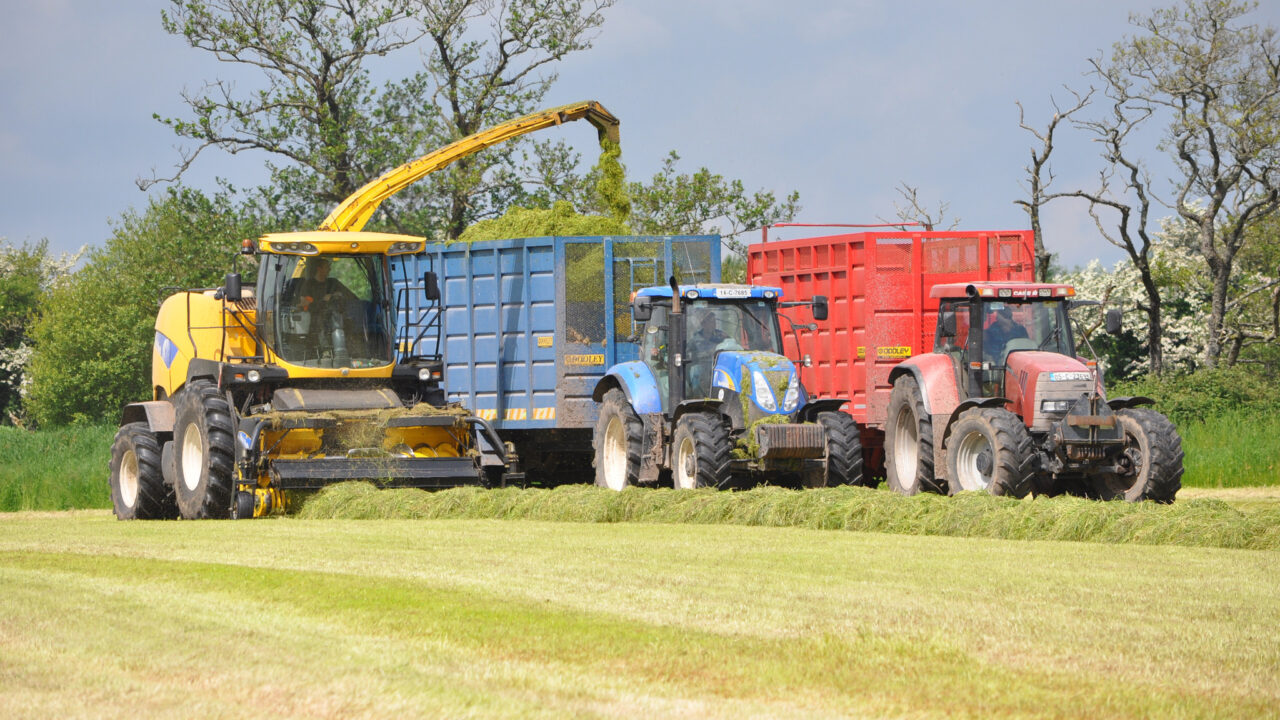The Department of Agriculture, Enterprise and Rural Affairs (DAERA), in Northern Ireland, has issued best-practice guidelines for dairy farmers during the month of May.
Christopher Breen of the College of Agriculture, Food and Rural Enterprise (CAFRE) has compiled a series of advisory tips, on behalf of the department.
Optimal silage
Regarding the best time to cut silage, the target that should be aimed for is a digestibility value of 67-70. In most regions this would mean cutting in early-to-mid May.
Grass should be cut in the first good spell of dry, consistent weather. A bright day is ideal to increase the sugar content of the grass – giving improved fermentation. Sunshine also promotes a more rapid wilt, decreasing the amount of water stored.
It is vital that grass is mown dry; mowing wet grass means reduced nutrients and a longer wilt time. Cutting grass later in the day is more preferable than starting early in the morning when dew may still be on the swards.
To speed up the wilting process, it is advised to spread the cut grass all over the field straight after mowing. Aim for a grass dry matter (DM) of 30% at harvesting. A rapid wilt prevents excessive sugar and protein losses. In optimal wilting conditions, the grass is ready to lift within eight hours if it has been spread out.
Good clamp management
According to Breen, the proper chop length promotes good consolidation in the clamp (pit) and yields enough fibre for the cow to ruminate. Set the chop length at 25mm for grass with a DM of 30%. If grass is wetter (less than 20% DM), he recommends a chop length of 50mm.
The purpose of ensiling grass is to limit the loss of nutrients while preserving those retained, which improves silage feeding value.
Silage fermentation is divided into two phases. Phase 1 dispels oxygen through proper grass chop length, even distribution, and filling at appropriate dry matter levels. Phase 2 is where lactic acid is produced by micro-organisms in grass, which lowers the grass pH and stabilises the silage.
The key factor is to eliminate air and make the clamp as air-tight as possible. Ensure the ensiled grass is spread in shallow layers, rolled constantly and always covered at night. Apply a suitable cover and weight the cover effectively.
If desired, silage additives can be used in the silage pit, which includes bacterial inoculants, non-protein nitrogen sources, acids, enzymes and sugar sources.
Regarding the second cut, it is essential to ensure that soil nutrients are right – soil analysis should be carried out regularly on silage fields. These results can then be used in the online CAFRE Crop Nutrient Recommendation Calculator to deduce slurry and fertiliser requirements in terms of phosphate and potash.
Slurry will provide much of the nutrients needed in silage ground. Evenly-spread slurry will improve silage fermentation and minimise sward damage.
Checklist for May
Breen also provided a ‘May’ checklist for dairy farmers.
Jobs checklist for May:
- Ensure good grazing management by grazing swards down to 1,600 kg DM/ha to maintain sward quality.
- Check silos (pits) and carry out any maintenance well in advance of silage making.
- Check that tanks have adequate space to collect effluent.
- Calibrate parlour and out-of-parlour feeders to ensure accurate feeding.
- Carry out spraying if conditions are suitable and docks/weeds are at the right stage for control. If spraying docks in silage fields generally allow an interval of at least 21 days between spraying and harvest. Always read the label as the interval depends on product used.

